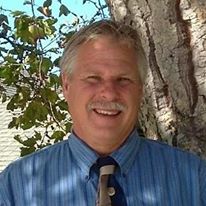We know water is the issue, we need solutions
October 31, 2016
OPINION by JOHN MACK
I am writing in response to Caren Ray’s recent campaign mailer regarding “water is the issue!” I agree that water is the most important issue facing the residents of Arroyo Grande. I am disappointed the existing City Council has not taken appropriate action which would recognize the severity of our current water crisis.
Ms. Ray’s mailer states she supports gray water conversion, that she will work to require water neutral projects, and that she will fight for a moratorium that protects all property rights. All three of these statements are filled with assumptions and are written in a way which supports continued development and leaving current water customers with the burden. The burden is both paying for and acquiring new water sources.
Let’s start with gray water. This is not something new. It has been done in 40s, 50s, 60s, through the current decade. The problem with gray water today is it will negatively impact our sewer system and sewer plant by not allowing the solids to reach its destination. This is already being compromised by the low-flush toilets and restrictors currently in use.
An overall increase in grey water systems, sound like a good idea, but there are consequences. Grey water is a tool to support new development when there is no savings to our water resources. What is a better solution is to have rain water capturing devices, which can be installed and used for landscaping and non-potable use.
The solution isn’t just finding a new water source. We need to use our current water supply more effectively and efficiently. We need to complete the water projects and work on the aquifer recharging with the water we have recycled.
Creating a path towards desalination will lead to the taxpayers paying for EIRS, special studies, consultants, and design which will ultimately be proven to be unaffordable. The best solution still, is to capture the water being dumped into the ocean and to recycle our current water.
Additionally, the cash for grass program didn’t work. What we should do is reward the people who have used the least amount of water. This reward program, would help re-establish water rates/usage based on actual occupant load rather than the arbitrary assumptions made by the city when calculating baseline usage from 2014 monthly water trends.
Ms. Ray also states that future development should be water neutral. It isn’t good enough to require a project to be water neutral, which infers you can trade agricultural uses for new development. What we need to do is require new development to purchase and bring new water sources into our city and keep existing water resources and any potential water savings for our current residents and business owners. In other words, an existing homeowner can add their additional bathroom or granny unit, but needs to retrofit that project and show improvements are truly water neutral.
It is not acceptable for new developments to come to Arroyo Grande, and retrofit existing businesses and residences for their own water use and profitability. The new development needs to bring in their own water. Again, this language presents a loophole for additional and further new development.
Finally, Ms. Ray’s mailer states she will “fight for a moratorium that protects all property rights.” Synonyms of the word moratorium include: ban, prohibition, suspension, postponement, stay, stoppage, halt, and freeze.
Given this definition it is misleading to say that there are development property rights when you have a moratorium in place, even if the moratorium is short lived. You cannot have it both ways. There is either a moratorium or there isn’t. A moratorium could be tiered—like Pismo Beach instituted.
What is important is to establish critical thresholds of our existing water resources and identify when we have hit the threshold of completely restricting new permits being issued. Overall these thresholds need to align with the time frame of securing new water resources or rites.
So, if it is going to take eight years to complete the water recycling projects, then we need to have the wherewithal to limit or cut the issuance of permits based on this time frame.
If you have questions related to this opinion piece or have other concerns please connect with me by emailing me at mack4agcc@yahoo.com. I look forward to answering your questions.







The comments below represent the opinion of the writer and do not represent the views or policies of CalCoastNews.com. Please address the Policies, events and arguments, not the person. Constructive debate is good; mockery, taunting, and name calling is not. Comment Guidelines